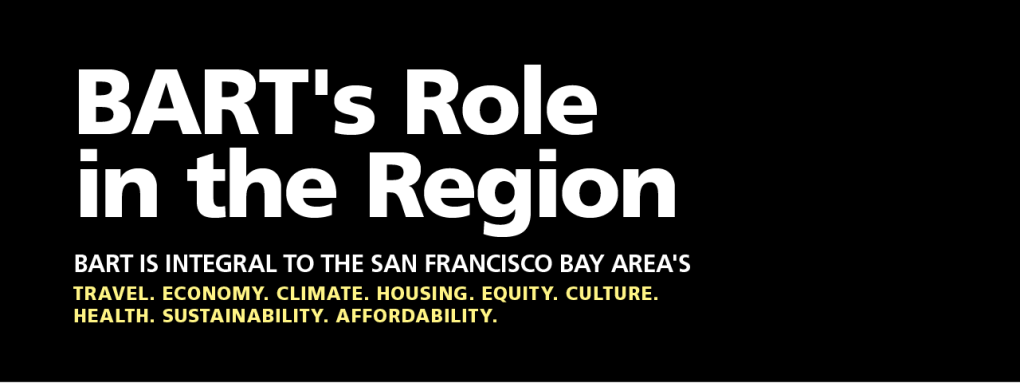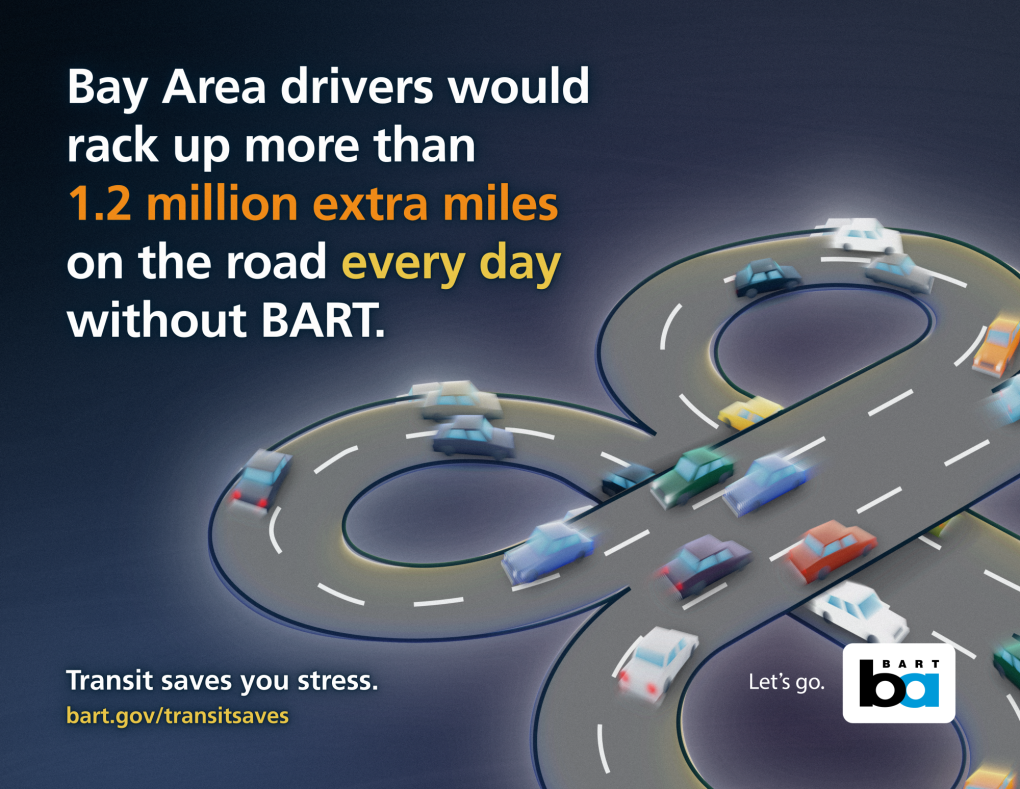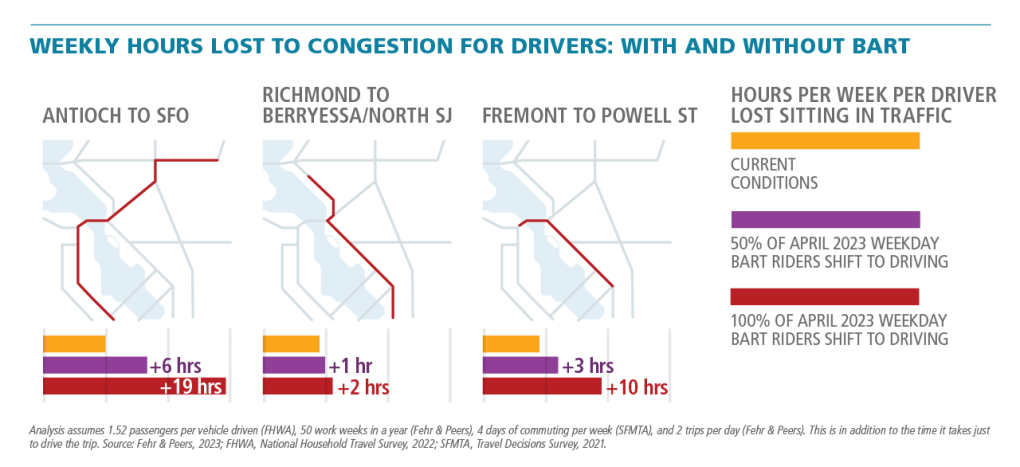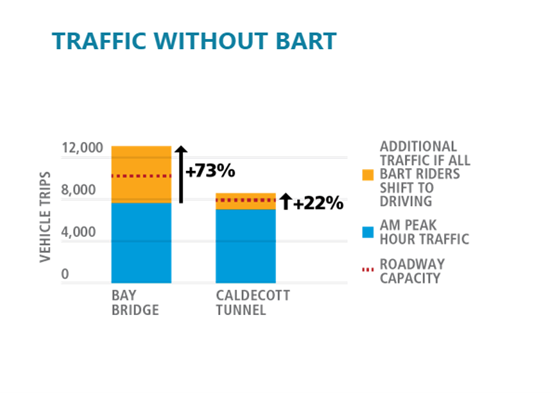Role in the Region: BART helps keep cars off the road

In July, BART released the Role in the Region Report, a comprehensive study of BART's impact on the Bay Area illustrated by new analyses, data visualizations, and powerful personal narratives. Over the coming weeks, we'll be sharing some of the key insights from the report in a series of Role in the Region articles here on bart.gov. Below is the first of these articles. We encourage you to read the full report - click here - and visit the project webpage at bart.gov/roleintheregion.
Today's post focuses on how BART keeps cars off the road, significantly reducing traffic congestion. See the full report for methodology.

Spending hours delayed by traffic means less time spent with family and friends or for recreation, which degrades quality of life for everyone, regardless of whether they use transit. Time spent in congestion is also less productive time than working and shopping, which results in less economic activity across the region. Heavy congestion may deter people from taking trips. Since there are no viable alternatives aside from BART and driving between Eastern Contra Costa/Alameda counties and Inner East Bay/West Bay areas, increased congestion may lead to less regional mobility.

BART service even benefits residents that choose to drive, in part by significantly reducing their time lost to congestion and thereby improving quality of life for everyone who lives here, whether they use transit or not. As shown in the image above, if BART did not exist, for some trips drivers could experience upwards of 19 hours in congestion weekly, in addition to the time it would take without any traffic.
What BART Riders Say…
“When I worked, it was so nice to have downtime between work and being a busy mom. BART made it so when I got home, I was relaxed instead of stressed by traffic. It really was wonderful. Now it means I’m heading to fun!"

If BART ceased to exist and riders had to drive instead, traffic could increase by 73% on the Bay Bridge and 22% in the Caldecott Tunnel during morning peak commute hours, which would exceed roadway capacity. To support the increased traffic volume, up to three additional lanes would need to be added to the Bay Bridge and an additional lane in the Caldecott Tunnel.
What BART Riders Say…
“[Without BART,] we probably wouldn't go to as many activities where we'd be fighting traffic and trying to find parking.”
BART Connects
As part of the Role in the Region Report, BART solicited stories from riders to learn how our public transportation system impacts their lives. The stories are compiled at bart.gov/bartconnects.
Below, read an excerpt longtime rider Linda Healey and how BART allowed her time to relax between work and raising a child. Find the full story here.

BART Connects: A working mom remembers when her only downtime each day was her BART ride
Linda Healey commuted to San Francisco from Walnut Creek for more than twenty years. When her son was young, those daily BART rides were her only downtime in the day. “BART got me home to my child quickly,” she said. “And it got me home unstressed because I could relax, rather than sit in traffic. That was a gift.” Today, Healey’s son – now in his thirties and living in Oakland – does the same commute his mother did for so many years, though he hops on the train a few stops up the line. He even works for the same company. “I passed the BART baton to him,” Healey said. “Hopefully one day, he’ll get to take it just for fun.”